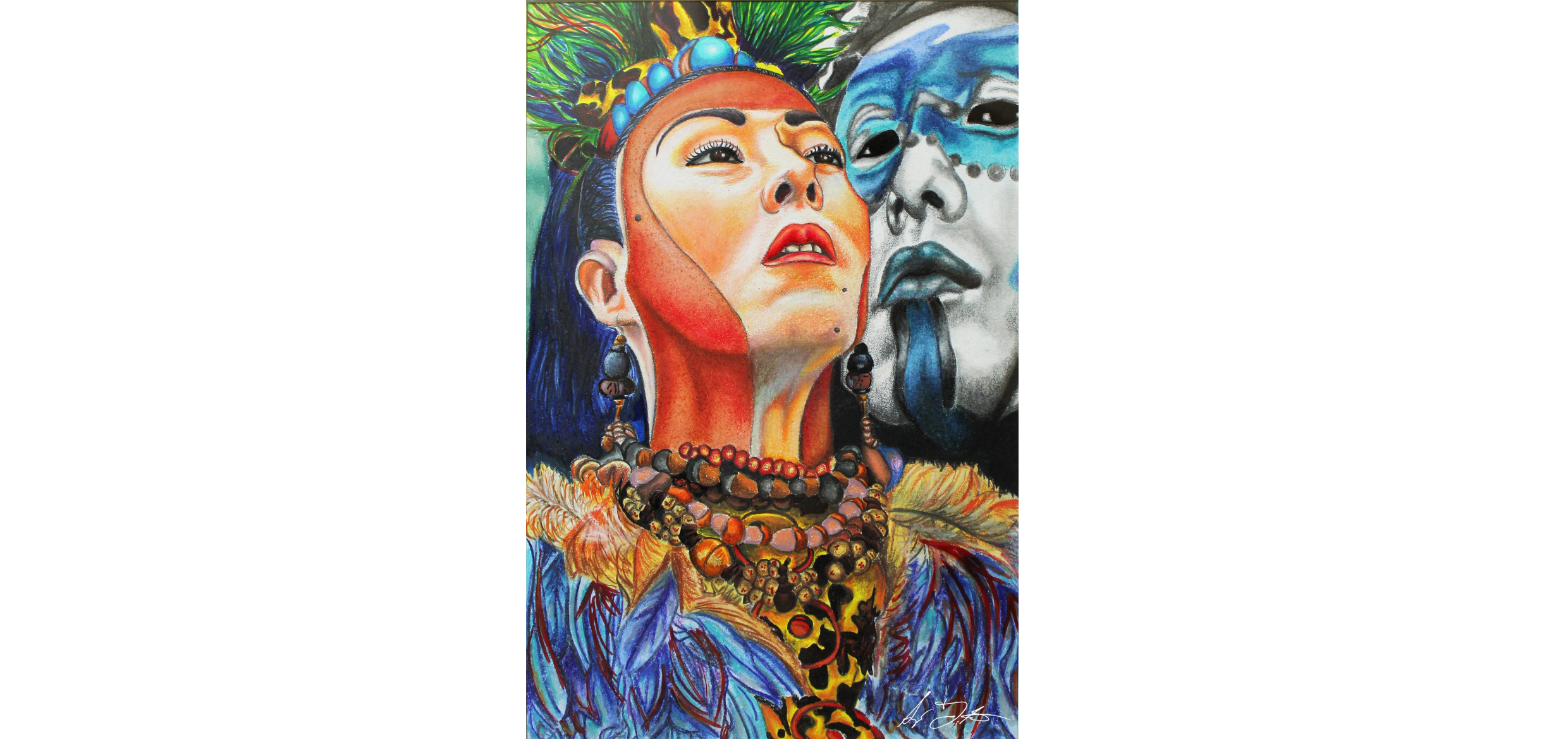In Her Paintings, Grief and Grace Share the Same Breath: The Artwork of Sueey Gutierrez
Sueey Gutierrez moves through the world like someone who’s already lived a few lifetimes.
A first-gen Brooklyn kid with Salvadoran and Mayan heritage, she builds her art from marrow and memory: grandparents who carried civil war and loss in their bones, and Catholic rituals braided with indigenous Lenca and Mayan spirituality. Her name, pronounced Sue-hey in English and Su-jey in Spanish means “baby star,” the name of a small star in the constellation of El Salvador.
“When I think about my work,” Gutierrez told HYVEMIND during a recent interview. “It’s where joy and mourning share the same breath, where women stand both fierce and tender, where the spiritual and political blur.”
Her paintings carry that same tension: grief and radiance locked in the same frame with imagery that stirs imagination without demanding conversation. Quiet and introverted by nature yet unafraid of hard truths, she makes art that invites vulnerability without spectacle.
Though Gutierrez’ art is not overtly political, she knows her very existence, a Salvadoran-Mayan woman making work rooted in cultural memory, carries weight. Her work leaves space for cultural, historical and present-day undertones: subtle enough to pass unnoticed, yet resonant enough to move those who recognize them.
Gutierrez was raised by Salvadoran grandparents whose lives were shaped by loss long before the country’s civil war. Both born in the 1920s, they endured poverty, separation and the early deaths of their mothers. Her grandfather was orphaned after escaping abuse and her grandmother was pulled from school to work before the age of ten.
When they made their way to Brooklyn, they carried the memory of what they survived and the strength to keep going. Their stories of faith, folklore and resilience turned evening dinners into the classroom that would shape her into the artist she is today.
As she grew older, Gutierrez, who was raised Catholic, began to study the church’s history and saw the shadows behind many of its teachings. The crusades, the Spanish Inquisition, the colonial violence; it was a reckoning that led her to reach further back into pre-Columbian traditions. Out of that search emerged an understanding that runs through her art: “Death is a rebirth.”
At 17, she lost her father and grandfather within months of one another. In processing her grief, she turned to a love of the macabre, screamo and death metal and black Victorian lace (a “romantic goth", she was quick to specify, not a Hot Topic goth).
“The darkness I was wearing was the darkness I felt,” she revealed. That young goth girl in lace, grieving and demanding answers from an indifferent God, would later give way to an artist.
Gutierrez didn’t immediately claim the artist title. She studied business and fashion merchandising at the Fashion Institute of Technology, chasing the kind of stable career her immigrant family had sacrificed to give her.
But art kept calling: long nights sketching and side commissions kept her going when the idea of a life filled with endless spreadsheets left her unfulfilled.
Then, in 2014, she traveled to El Salvador and walked the landscapes her grandfather had described to her as a child. The experience of seeing those places in person for the first time as an adult brought his stories to life in a way that deepened her connection to the history she carried.
Soon after, she painted Intuición, a piece steeped in pre-Columbian imagery and women’s wisdom. When she shared it, her community claimed it. It was the first time realized she could transmute her private grief to collective meaning.
Again and again, she paints women who hold both power and pain. They channel the mythic feminine: medicine women, shapeshifters and mothers who outwit gods. She recognizes that duality in herself: the outer shell of bravery wrapped around inner cautiousness and self protection.
“Feel the fear and do it anyway,” she said, a saying that belongs as much to her own life as to the figures she paints.
In her award-winning “Renacer en Las Aguas de Moncagua” (To Be Reborn in the Waters of Mancagua), a female figure surfaces through turquoise depths, wrapped in red fabric. Fire flickers as an expression of rage, red representing passion and sacrifice, white light of cleansing and transparency.
“It’s about letting go of the past,” she explained. “And the person who resurfaces is new.”
Outside the studio, Gutierrez has built a life on her own terms: quiet hikes, salt air, vintage threads, music in every language and the kind of travel that proves resilience is universal. It’s a rhythm she’s chosen, one that mirrors the balance in her art.
“Sometimes, often you have to create that for yourself, and it's a choice,” she said. “I choose this, I choose to be this.”
For more information about her work, or to get in touch with Sueey Gutierrez visit sueeygutierrez.com




